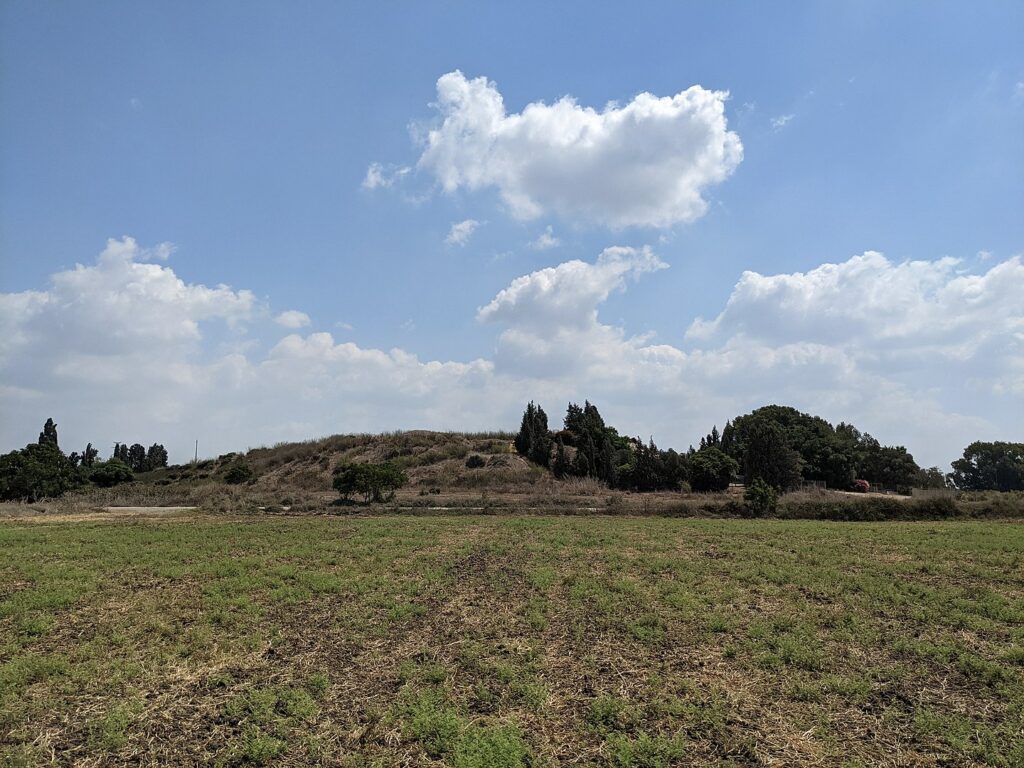Location and Identification
Tel Hefer, also known as Tell el-Ifshar, is located on the northern side of the Alexander River breach through the eastern kurkar ridge in the central Sharon Plain, approximately 4 km from the Mediterranean coast. Strategically positioned on coastal routes and at the navigable point of river traffic, its surrounding rich alluvial soils and water springs made it a prominent site in the Sharon Plain.


History
The site’s history spans from the Early Bronze Age to various later periods. The ancient name of the site is unknown, with several biblical references suggested but not confirmed.
Biblical Context
Biblical identifications include suggestions that Tel Hefer could be the kingdom of Hepher conquered by Joshua, part of the Solomonic administrative district, or one of the Manassehite clans. The Roman-Byzantine remains might relate to Kefar Parshai, a Samaritan village mentioned in the Talmud.
Excavations
The excavations at Tel Hefer, have been undertaken by the ‘Emeq Hefer Archaeological Research Project since 1979, a collaborative effort involving the State University of New York at Buffalo and the Israel Antiquities Authority. Various seasons of the project have also included participation from The Brooklyn Museum in New York, The Jewish Museum in New York City, Rutgers University in Newark, New Jersey, and the College of DuPage in Glenn Ellyn, Illinois. The project has been under the direction of S.M. Paley and Y. Porath.
Findings
Bronze Age
- Early Bronze Age IB: Settlement debris including pottery, mud bricks, and charred lentil indicates an early storage installation.
- Middle Bronze Age I: Evidence of human activity, possibly related to nearby Middle Bronze Age I sites.
- Middle Bronze Age IIA: Well-stratified remains with eight distinct phases, including residences with courtyards, cooking ovens, and various construction materials.
- Late Bronze Age and Later Periods: Mention of a military campaign by Pharaoh Amenhotep II, with no concrete evidence linking the names to Tel Hefer.
Iron Age
- Iron Age I Remains: These were identified primarily in pits and silos that were dug into the destruction layer of the Late Bronze Age (phase A/6). The artifacts found from this period include cooking pots, collared-rim jars, and a few sherds of Philistine pottery.
- Iron Age Settlement Evidence: The Iron Age I pits were sealed by a thick fill of Iron and Bronze Age detritus (phase A/4), likely spread to prepare a base for constructing buildings. Sherds from the fill date to the end of the tenth and beginning of the ninth centuries BCE, indicating the existence of a settlement from this time that has not yet been located.
- Construction Over the Fill: A house built on top of this fill (phase A/4) belongs to a settlement period. On its floors, typical eighth-century BCE sherds of juglets, decanters, and cooking pots were discovered.
- Agricultural Implements: A silo was found beside the house, containing basalt grinding stones and some charred grains of wheat, indicating agricultural activities during this period.
Source
Stern, Ephraim-New Encyclopedia of Archaeological Excavations in the Holy Land 3-Israel Exploration Society (1993)
Biblical Hiking map

